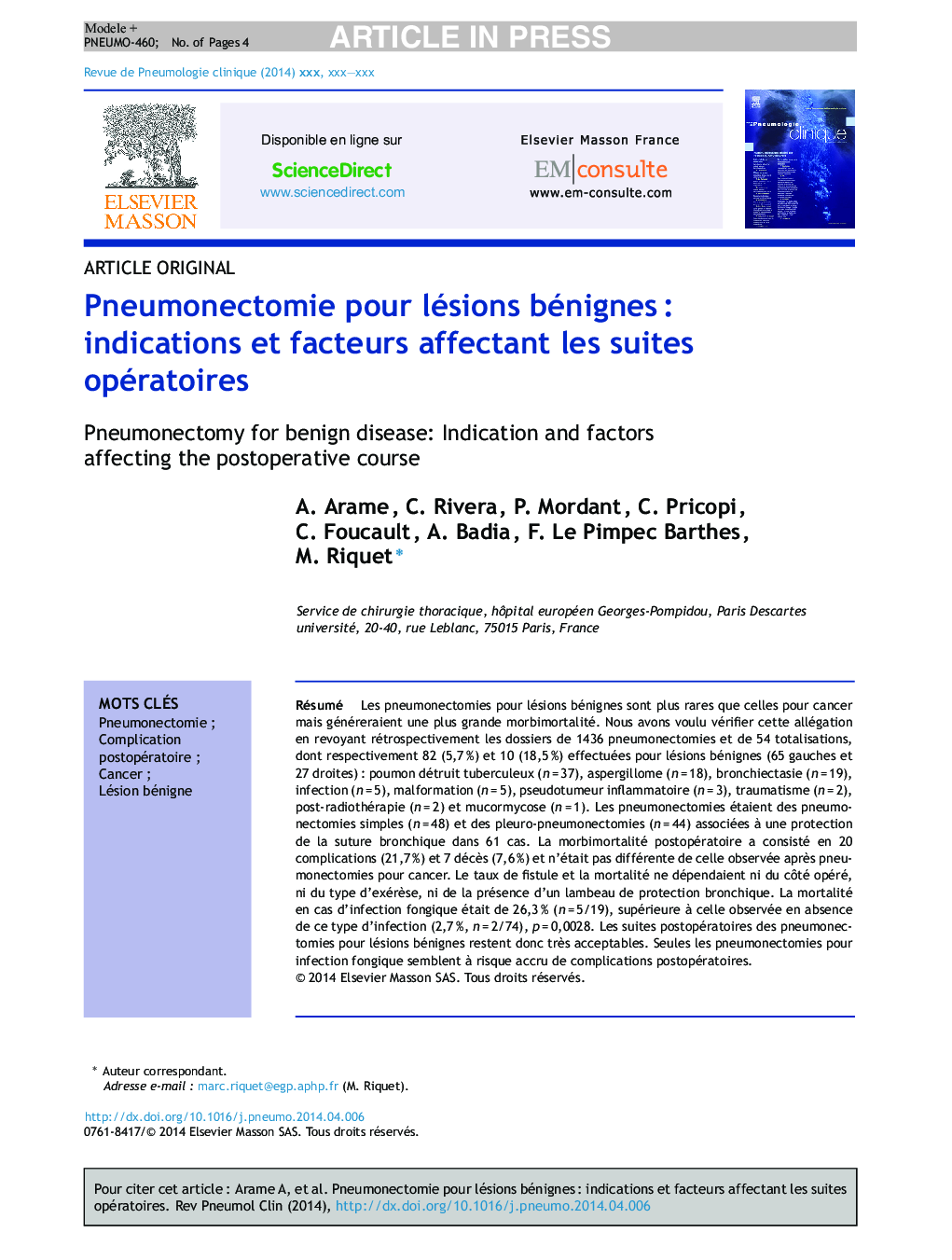| Article ID | Journal | Published Year | Pages | File Type |
|---|---|---|---|---|
| 3419424 | Revue de Pneumologie Clinique | 2015 | 4 Pages |
Abstract
Pneumonectomy for benign disease is rare but may generate more postoperative morbimortality than when performed for lung cancer. We questioned this assessment and retrospectively reviewed 1436 pneumonectomies and 54 completions of which 82 and 10 performed for benign disease (5.7% and 18.5%, respectively): left n = 65 and right n = 27. Indications were: post-tuberculosis destroyed lung (n = 37), aspergilloma (n = 18), bronchiectasis (n = 19), infection (n = 5), congenital malformations (n = 5), inflammatory pseudotumor (n = 3), trauma (n = 2), post-radiation (n = 2) and mucormycosis (n = 1). Pneumonectomy consisted of 48 standard and 44 pleuro-pneumonectomies. Stump coverage by flaps was performed in 66.3% (61/92). Complications occurred in 21.7% (20/92) and postoperative deaths in 7.6% (7/92, of which 5 with fungal infections), which was not different than what was observed in lung cancer. There was no difference in fistula formation and mortality regarding the side, the type of resection and the protective role of stump coverage. Considering patients with fungal infections versus others, mortality was 26.3% (n = 5/19) and 2.7% (n = 2/74), respectively (P = 0.0028). Pneumonectomy for benign disease achieves cure with acceptable mortality and morbidity. However, presence of fungal infection should raise the attention for possibility of increased postoperative risks.
Keywords
Related Topics
Health Sciences
Medicine and Dentistry
Infectious Diseases
Authors
A. Arame, C. Rivera, P. Mordant, C. Pricopi, C. Foucault, A. Badia, F. Le Pimpec Barthes, M. Riquet,
